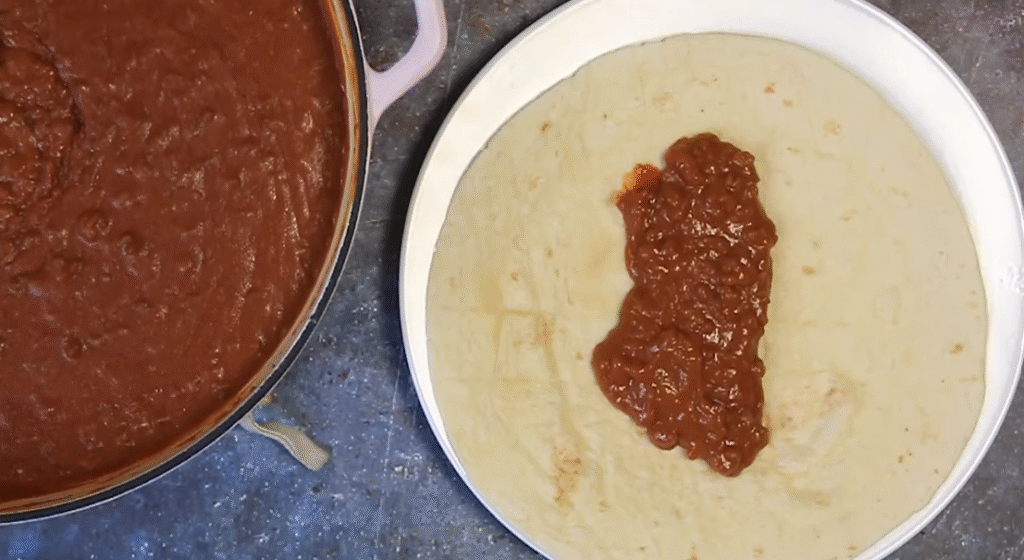The reputation of the chili cheese burrito seems to be greater than its actual size. When it first appeared in Taco Bell’s menu in the late 1980s, it immediately established itself as a mainstay for teens seeking affordable, satisfying comfort. Stuffed with melted cheddar and gooey chili, it resembled a warm blanket wrapped in flour tortillas. By the early 1990s, a lot of students had come to rely on it as their after-school meal, creating a habit that combined flavor and affordability.
Devotees frequently use sentimental nostalgia to describe their devotion. One Reddit user described traveling almost 400 miles to get one from a local Taco Bell. Another made a joke about it being his “tour fuel” when he first started doing comedy. The loyalty does a remarkable job of bringing to light the connections between food and youth culture, memory, and identity. The Chili Cheese Burrito thrived on simplicity, which made it incredibly dependable as a snack and a meal, in contrast to more intricate dishes.
The loss was profound when Taco Bell stopped selling it in the majority of areas in the late 1990s. It was rumored to have survived as a “secret menu” item, tucked away in a few establishments throughout the Midwest like buried treasure. The burrito became a mythical culinary tale as a result of the scarcity, which only increased demand. A passion that was especially inventive at a time when fast-food activism was less prevalent, fans created specialized websites and forums to keep track of where it could still be ordered.
Chili Cheese Burrito – Key Information
| Detail | Information |
|---|---|
| Item Name | Chili Cheese Burrito (originally “Chilito”) |
| Creator | Taco Bell, late 1980s |
| Description | Flour tortilla filled with hearty chili and melted cheddar cheese |
| Original Price | $0.79 in the early 1990s |
| Current Price | Around $2.99–$3.99 depending on location |
| Calories | Approx. 380 per burrito |
| Availability | Discontinued nationally in late 1990s, offered regionally, revived for 2025 Y2K Decades Menu |
| Cultural Status | Cult favorite, often discussed in nostalgic fast-food forums |
| Fan Movements | Online petitions, Reddit threads, Facebook fan groups |
| Recipe Popularity | Numerous copycat recipes circulating among home cooks |
| Website | Taco Bell – Chili Cheese Burrito |

Nostalgia sells, which makes the 2025 decision to bring it back as part of the Y2K Decades Menu incredibly clear. Similar to how Disney+ increased sign-ups by releasing beloved series, Taco Bell understood the impact of reviving items associated with early childhood. The Chili Cheese Burrito quickly became the most talked-about return when it was placed next to the Double Decker Taco and 7-Layer Burrito. Considering that it costs less than $4, it is surprisingly inexpensive when compared to the majority of contemporary fast-food combos. This accessibility is very effective at drawing in casual diners and rekindling devoted patrons.
The revival was greatly accelerated by social media. Instagram food bloggers styled it like haute cuisine, YouTubers filmed side-by-side comparisons to the 90s version, and TikTok reviewers recorded reactions with almost childlike enthusiasm. According to one influencer, he placed three consecutive orders to make up for years he had missed. Similar to Travis Scott’s McDonald’s meal collaboration, these enthusiastic posts show how digital virality can transform a simple menu item into a cultural phenomenon.
The resurgence of the burrito speaks to the deeper significance of comfort food in areas beyond marketing. People tend to rely more on tastes that remind them of security when things are uncertain. Increases in sales of pizza, ice cream, and mac-and-cheese over the last ten years have demonstrated how consumers look for emotional anchors. Now, the chili cheese burrito takes over that function as a reliable flavor memory rather than as gourmet food. With parents now introducing their teenagers to a meal they once loved, it symbolizes a connection between generations.
Celebrities have also considered its role in their lives. In order to survive tour nights, musicians who recalled lengthy drives between performances said they would grab chili cheese burritos. In interviews, actors mentioned them as their guilty-pleasure pre-red carpet snack. Despite its lack of glamour, the burrito was widely popular due to its democratic availability. Thus, its resurgence is especially advantageous for a company that wants to remind consumers that fast food is still about connection, convenience, and community.
Fans, of course, argue over whether the new version is comparable to the old one. Some claim that there is more tortilla than filling and that it feels smaller. Others say there has been a slight change in the level of spice. However, those arguments are not detrimental; rather, they significantly increase engagement and generate dialogue that keeps the topic current. The discussion is similar to the current discussions surrounding other comebacks, such as McDonald’s McRib, where even criticism serves to highlight the food’s cultural significance.
At the same time, home cooks have taken matters into their own hands and developed extremely adaptable recipes. While TikTokers experiment with Fritos, sour cream, or jalapeños to customize the flavor, food bloggers describe variations that combine beef, beans, cheese, and tomato paste. As a make-ahead comfort food for busy weeks, some even freeze batches. These developments demonstrate how versatile the burrito is across kitchens and geographical areas, making it incredibly resilient as both a homemade meal and a fast food item.
Its cultural comeback also mirrors broader changes in the industry. Fast-food restaurants are bringing back traditional dishes more frequently in an effort to compete with fresher, healthier options. A particularly creative tool is memory-driven menus, which remind patrons of emotional ties that grain salads or kale bowls cannot duplicate. Like 90s fashion making a comeback or vinyl records regaining popularity in music, the Chili Cheese Burrito’s comeback signifies the timeless appeal of vintage styles.

